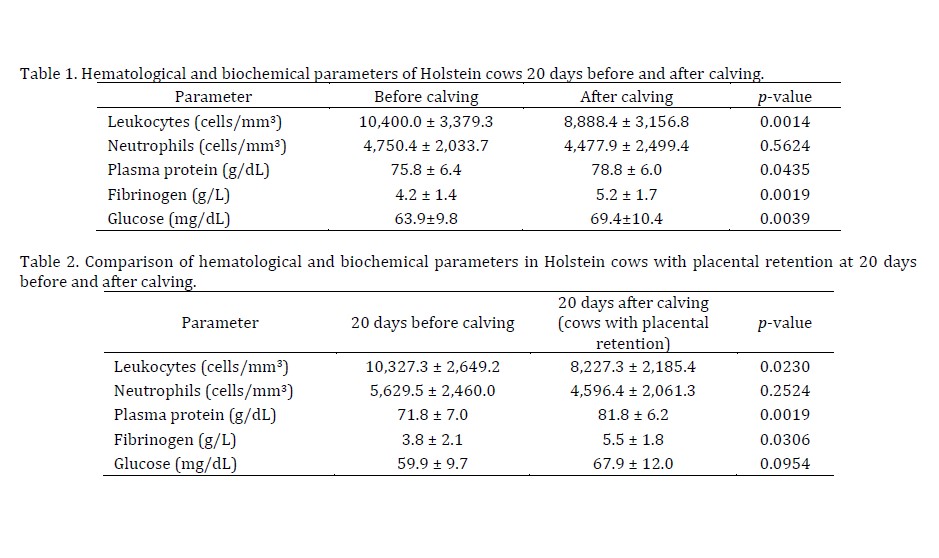Leucogram, fibrinogen, plasmatic proteins and glucose evaluation in dairy cows before and after calving
DOI:
https://doi.org/10.21708/avb.2019.13.4.8482Abstract
Immunological deficiency observed during the transition period in dairy cows promotes development of puerperal diseases. Thus, the research aimed to evaluate hematological (leukogram) and biochemical (glucose, fibrinogen, and total proteins) parameters in Holstein cows (n = 44) before (day -20) and after (day +20) parturition and the possibility of identifying initial signs of reproductive illness, thereby assisting the professional in decision making. There was a difference in the number of total leukocytes, which decreased postpartum (8,888.4 cells/mm3). There was no difference in neutrophils at both time points. Females who presented high concentration of fibrinogen (5.2 g/L) and total plasmatic proteins (78.9 g/L) at postpartum presented retention of fetal appendages and later uterine disease. These results are consistent with the literature on antepartum leukocytosis and inflammation indicated by increased fibrinogen and plasmatic protein and differ in terms of neutrophil behavior. Thus, laboratory assays can be complementary tools to physical examination, aiding in the diagnosis and identification of changes even before the appearance of clinical signs in animals, which is necessary for the prevention of metabolic and infectious disorders.
Downloads

Downloads
Published
Issue
Section
License
Autores que publicam na Acta Veterinaria Brasilica concordam com os seguintes termos: a) Autores mantém os direitos autorais e concedem à revista o direito de primeira publicação, com o trabalho simultaneamente licenciado sob a Licença Creative Commons Attribution que permite o compartilhamento do trabalho com reconhecimento da autoria e publicação inicial nesta revista. b) Autores têm autorização para assumir contratos adicionais separadamente, para distribuição não-exclusiva da versão do trabalho publicada nesta revista (ex.: publicar em repositório institucional ou como capítulo de livro), com reconhecimento de autoria e publicação inicial nesta revista. c) Autores têm permissão e são estimulados a publicar e distribuir seu trabalho online (ex.: em repositórios institucionais ou na sua página pessoal) a qualquer ponto antes ou durante o processo editorial, já que isso pode gerar alterações produtivas, bem como aumentar o impacto e a citação do trabalho publicado (Veja O Efeito do Acesso Livre).


 Esta obra está licenciada com uma Licença
Esta obra está licenciada com uma Licença 